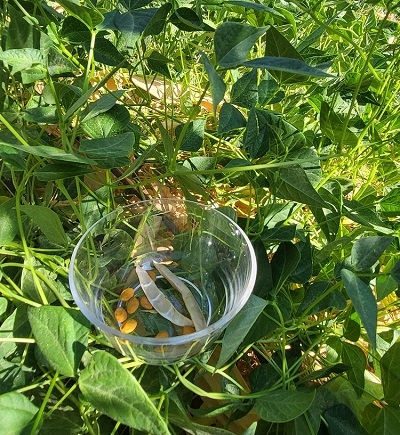- Author: JD Trebec
Before moving to California about a decade ago, I lived in Tucson, Arizona. Although my new home in Woodland is rightfully known as the Food Front, thanks to the fertile farmland that surrounds it, Tucson also has a highly regarded relationship with food. Tucson is one of two cities in the United States recognized by the United Nations Educational, Scientific, and Cultural Organization (UNESCO) as a City of Gastronomy in recognition of its Sonoran food culture. The city is a center of regional foods that arose in northern Mexico and the Southwestern US. These run the gamut from Sonoran-style hot dogs to wild foods like cactus fruit to local varieties of squash and beans developed by the indigenous people of the border region.
One Tucson crop that I brought with me to try in the fertile soils of the Sacramento Valley is my favorite bean, the tepary. Tepary beans were domesticated by the Tohono O'odham nation of the Sonoran Desert. Tepary beans are a cultivar of Phaseolus acutifolius, a bean species well adapted to life in the desert. The bean plants have narrow teardrop-shaped leaves that turn their surface parallel to the sun's rays to reduce water loss when the sun is too intense.
Traditionally, tepary beans are planted in areas of stormwater runoff from the late summer monsoons in the Southwestern US. They need wet soils to germinate but then are extremely drought tolerant and can survive the vagaries of desert rain and the dry autumn that follows the monsoon. Too much water actually reduces the number of beans produced as more energy is put into growing foliage. The plants grow quickly and beans may be harvested in as little as two months.
The beans are small, about the size of a lentil, with a nutty taste and firm texture. Different varieties are colored brown, black, or white. They are high in protein and research has identified amino sugars specific to the species that protect the bean from heat and prevent the bean's protein from denaturing. I love the beans in my vegetarian chili, but they make a great bean dip or pot of beans as well.
I had always assumed that tepary beans were only known in the Tucson area so I was surprised when I spotted them as an ingredient in snack foods from India. While trying to discover when they were introduced to India, I found that they were once grown in California as well. A USDA pamphlet states that in 1918, California had 17,000 acres planted in tepary bean, but market forces and public preferences caused the tepary bean to fall from favor in the 1920's.
There has been some recent interest in harnessing the tepary bean's heat and drought tolerance as the world becomes warmer which has led to reduced yields in common beans that don't do as well in the heat. A 2015 NPR story describes how Colombian researchers have managed a cross of tepary and common beans that is already benefiting farmers in Central America and Africa. I'm happy to see a little respect for tepary beans, but don't understand why they aren't more widely grown as they are delicious and already adapted for a warmer future.
USDA information: https://plants.usda.gov/DocumentLibrary/plantguide/pdf/cs-pg_phac.pdf


